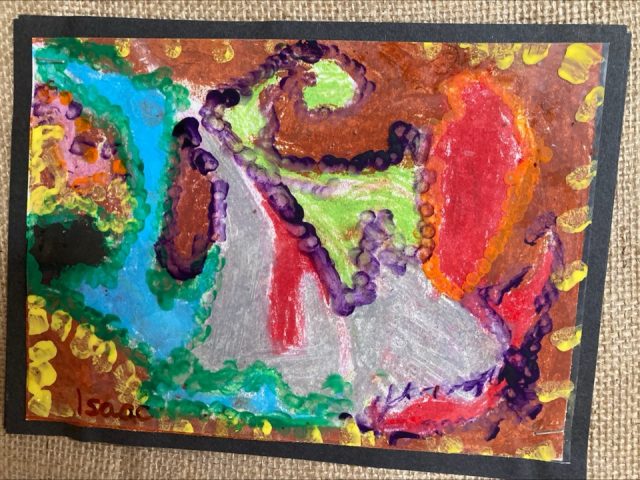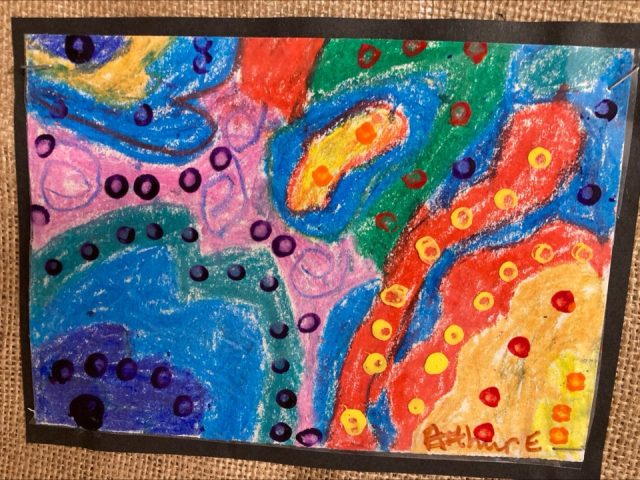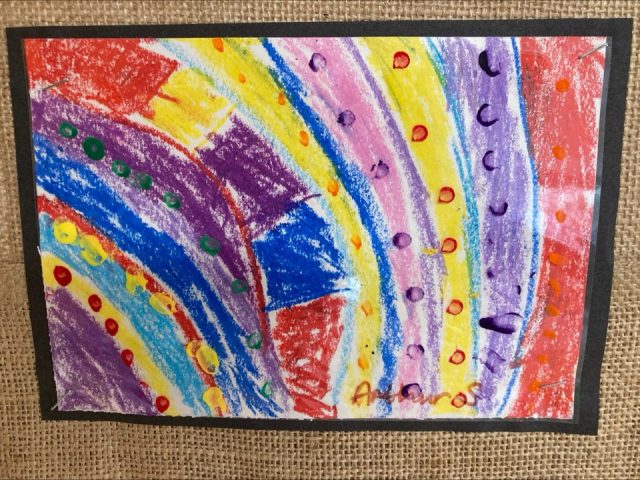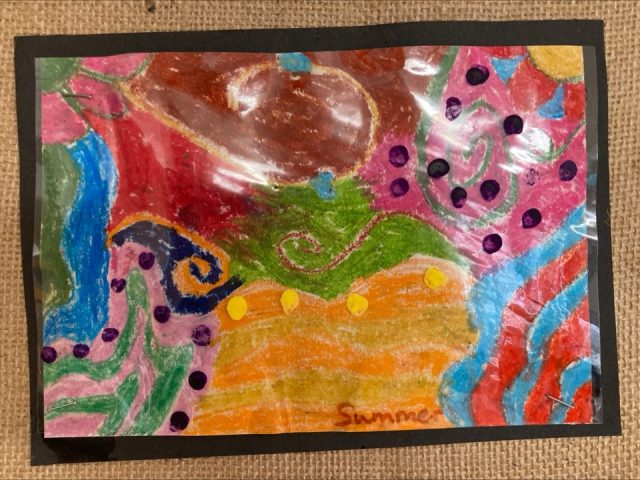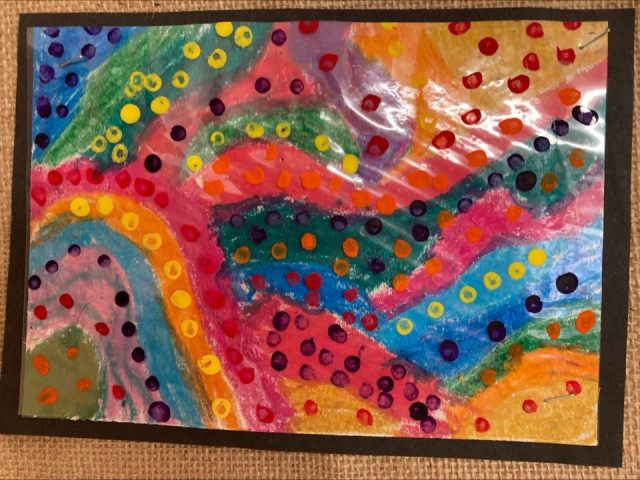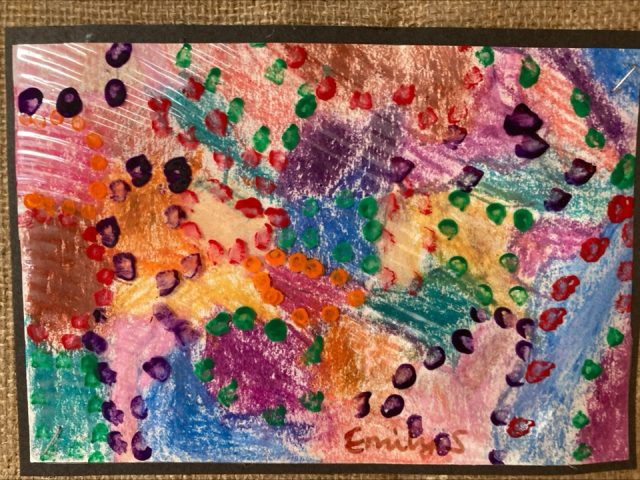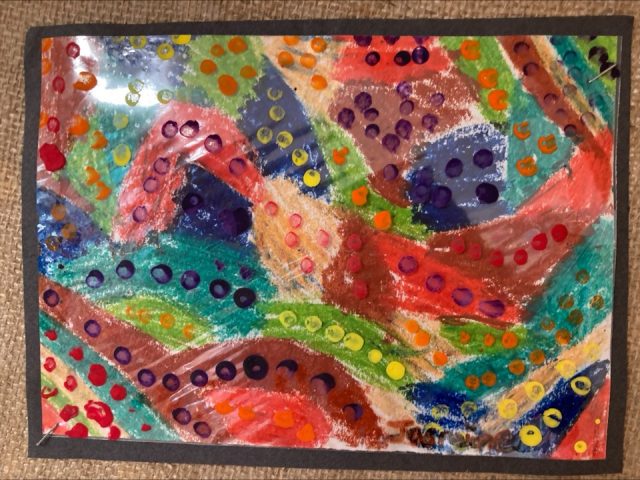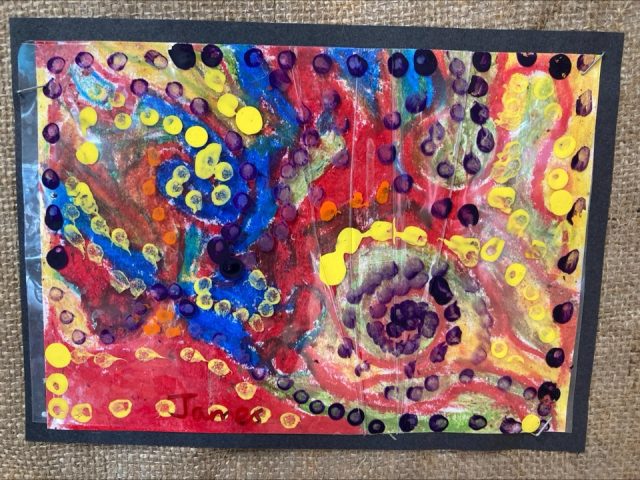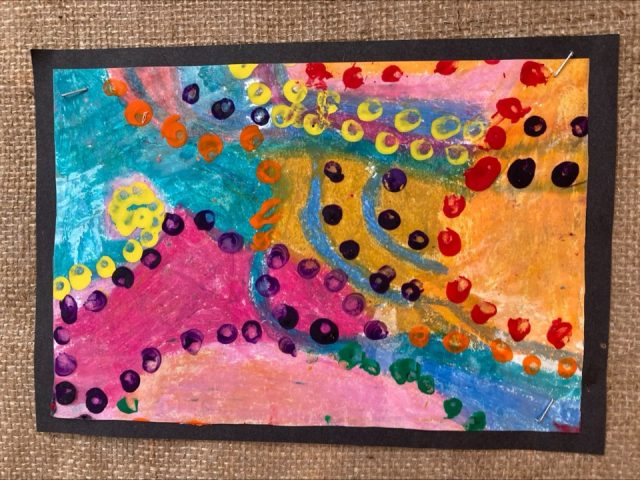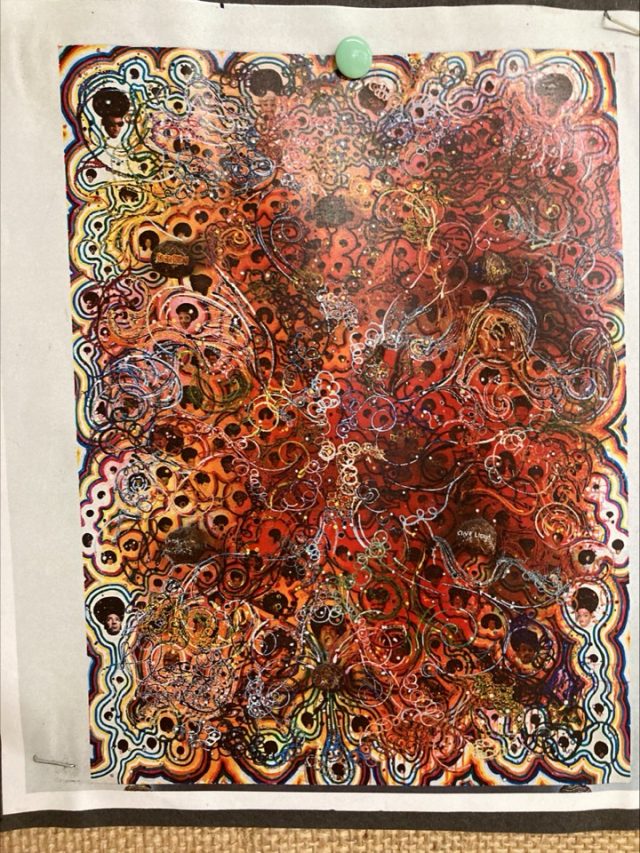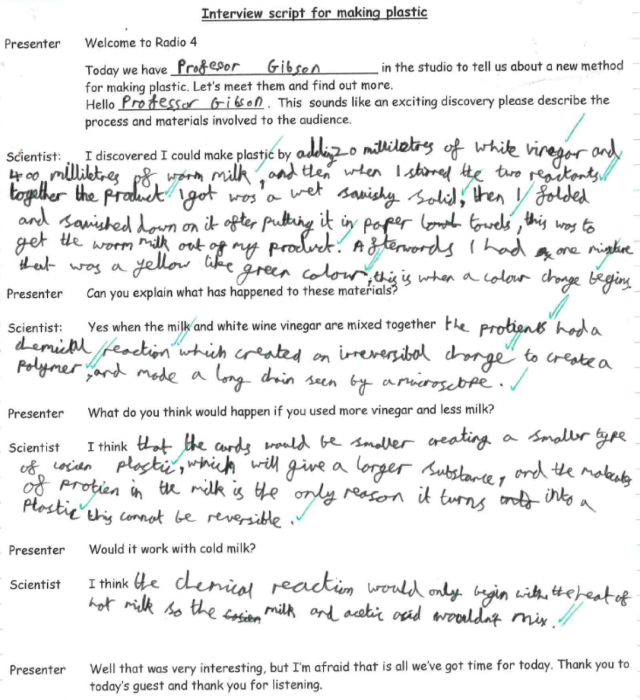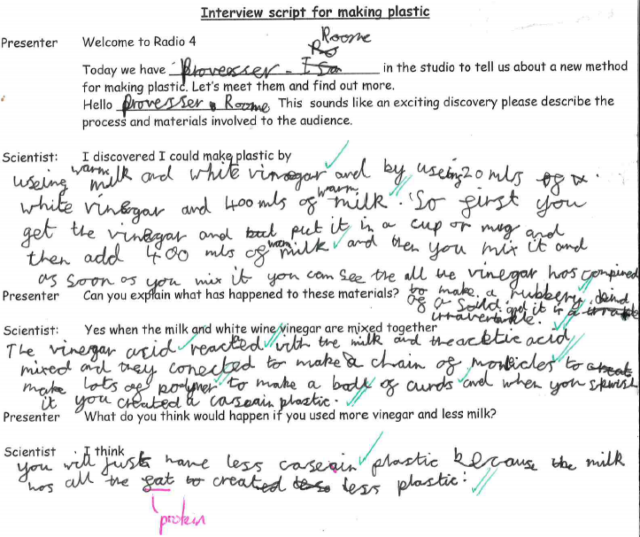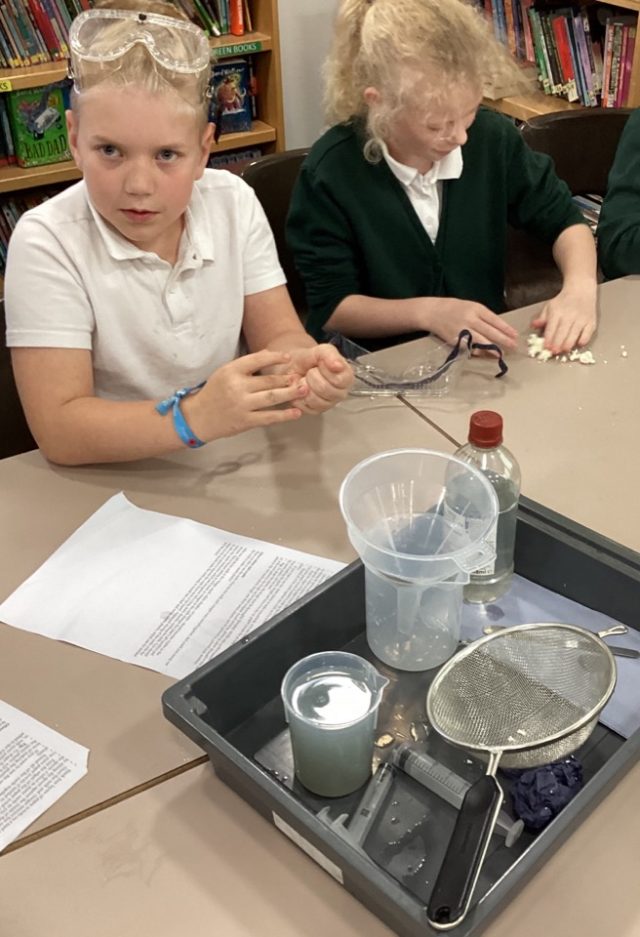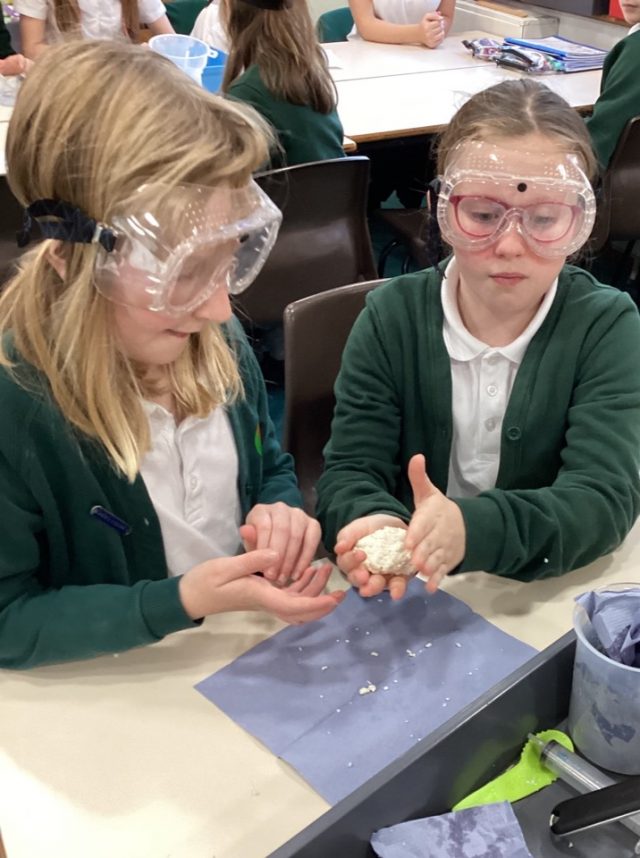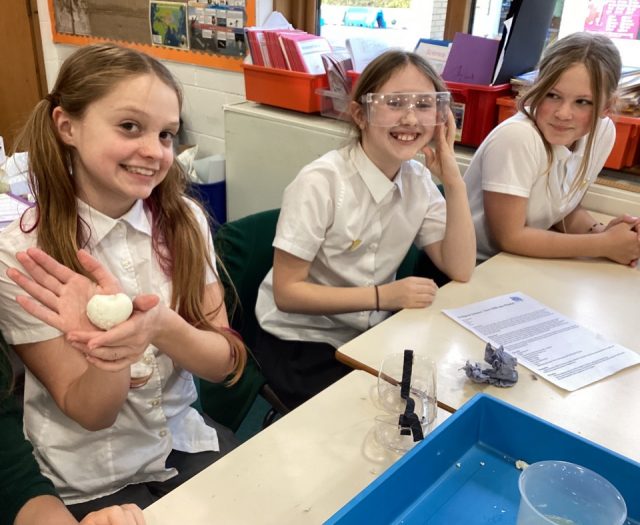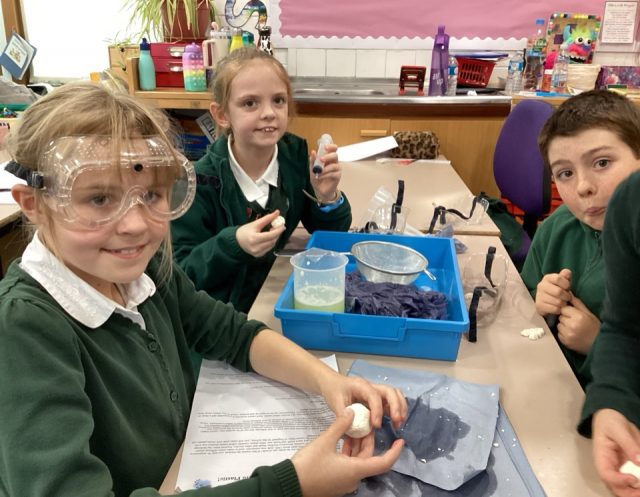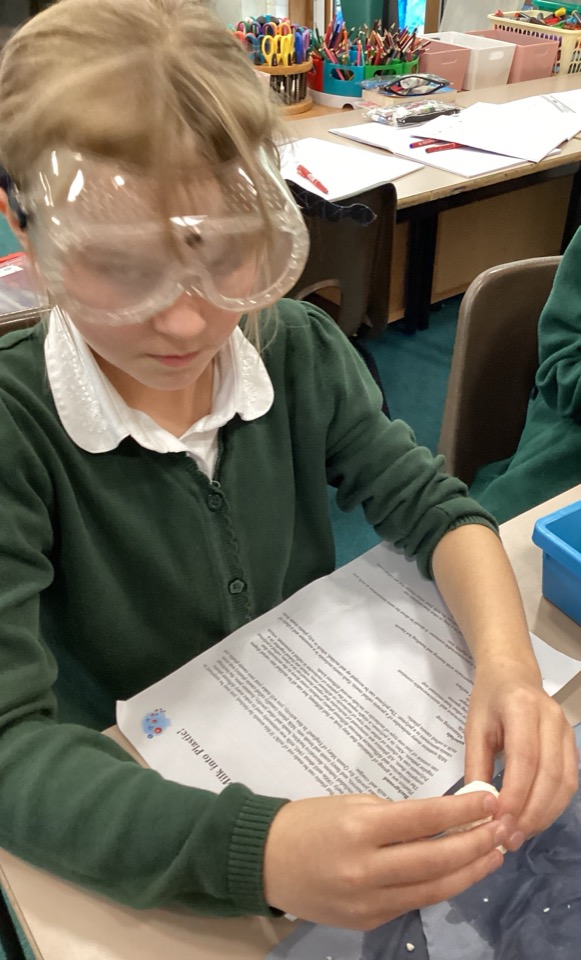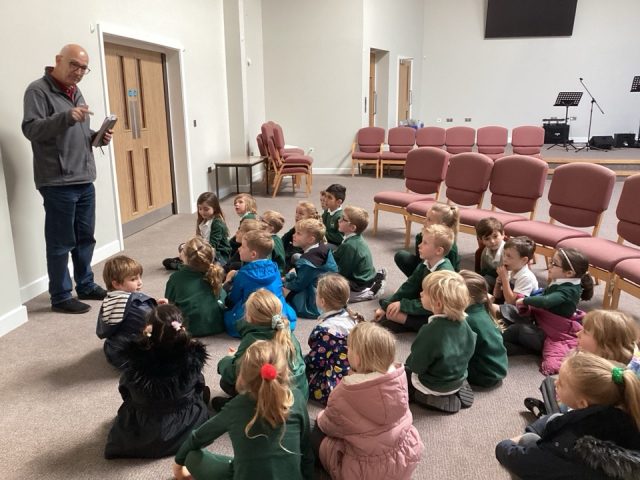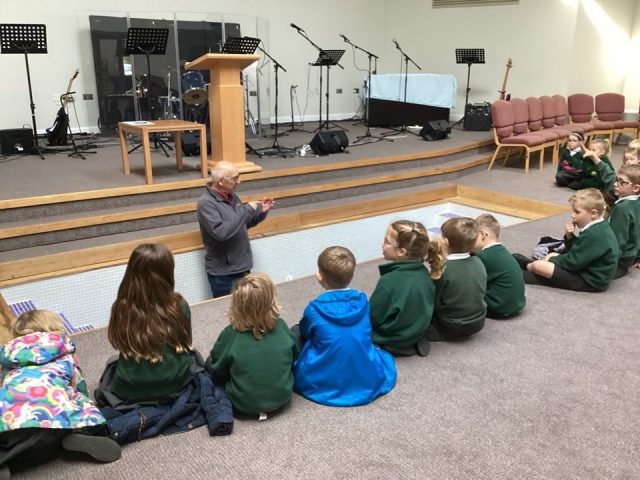The children in Amazon Class found out that casein plastic, which was commonly used at the start of the 20th Century to make buttons, buckles and other plastic trinkets, can be made by mixing warm milk and white vinegar. The experiment was part of our investigation into reversible and irreversible changes. A full report, in the form of Professors Hardy, Roome and Gibson’s interviews with Radio 4 can be read here.
Classes
GIRLS ACHIEVE BRONZE IN THE HSSSP GIRLS’ FOOTBALL COMPETITION!
On a beautifully mild and sunny afternoon, nine of our key stage 2 girls went to Hartismere High School for the High Suffolk girls’ football tournament.
These games were short (12 minutes), seven-a-side and with no half-time change. In the first round, Fressingfield played six games, aiming for enough points to go through to the next round. For each game, the girls needed to quickly sort themselves into a team of seven, working out who was attack, defence and goalie, and who would be substitute.
In the first game, Imogen scored two goals in rapid succession. What a positive start that was! Quite near the start, we realised that the sun was bright, and this affected the goalkeepers’ ability to see. As a consequence, we decided to make sure our goalies got to the right end of the pitch for each game!
Harriet and India both took it in turns to be in goal, and did a great job defending the goal mouth. Amy was also in goal once, making a magnificent save! Jasmine was an absolute little terrier – wherever the ball was, Jasmine seemed to be there. What incredible fitness that player has! Bonnie was very enthusiastic, and did a good job of marking some strong opponents. Ella’s strength was strategy, and she played a great role in deciding who was on or off, and what position they played. Sophia used her match experience in hockey to be in the right place, at the right time. Eden and Imogen used their experience as local club players to make some great tackles, and move the ball nicely towards goal.
In the first round, Fressingfield played six games. They won four, drew one and lost one. They even felt proud about losing the one match, as some of the opponents were clearly very experienced players. Because of the points scored in those games, Fressingfield went on to the play-offs, for bronze medal position. A confident, early goal from Jasmine meant that, from the start, Fressingfield had the edge. They held onto the 1-0 lead until the final whistle, to gain a well-deserved third place.
Mrs Scott and Ms Perry were so impressed by the girls’ attitude throughout the entire afternoon. Showing all our sporting values of honesty, respect, determination, passion, teamwork and self-belief, our girls’ team made us proud!

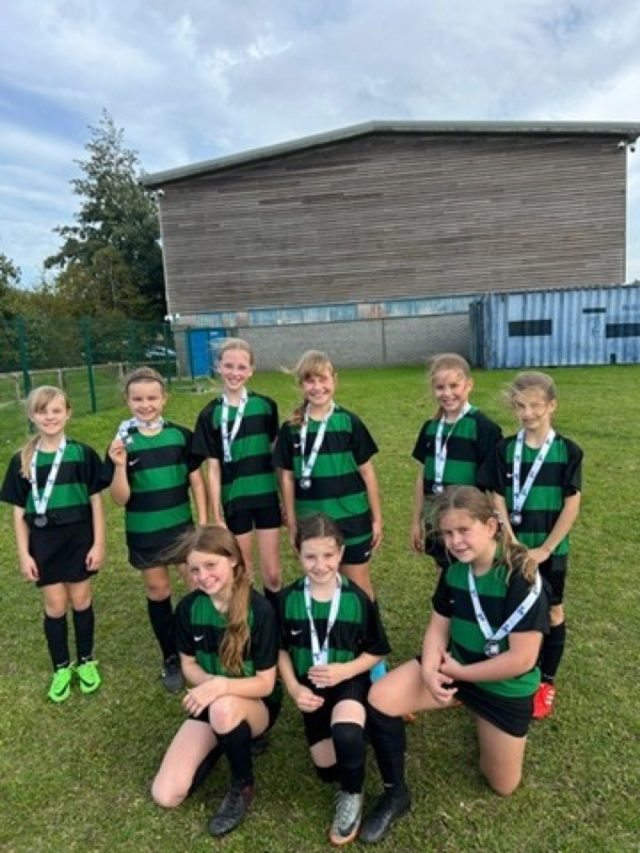
Turner Prize-winning Artist Chris Ofili
Children in Amazon Class have been learning about the Turner Prize-winning Artist Chris Ofili and his artwork. Inspired by his West African heritage, the artist created his famous work, named Afrodizzia. In fact, he made several copies of this abstract work. Unlike Chris Ofili, we did NOT use elephant dung in our paintings, but built up layers using oil pastels and thick poster paint. We have tried to show the energy of Ofili’s work in our own pieces – and, as you can see, have done a pretty good job!
